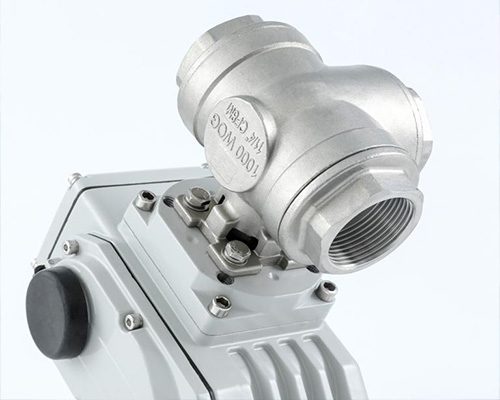The Core Functions of Three-Way Valves
In industrial systems and daily equipment, three-way valves are key components that precisely control fluid flow direction and flow distribution through three ports.
Working Principle of Three-Way Valves
Three-way valves are divided into confluence type and diversion type. The confluence type combines two fluids into one output, while the diversion type divides one fluid into two outlets according to a preset ratio. Relying on the movement of the valve core, with the help of manual or electric or pneumatic actuators, the valve core changes position and switches the fluid path.
Now let's take a brief look at the main functions of the three-way valves as below:
1. Flow control function
In industrial processes such as chemical and petroleum refining, the fluid flow ratio must be strictly controlled to ensure product quality and reaction safety. The three-way valve can accurately adjust the flow of each port by adjusting the valve core opening. For example, in the heat exchange system, according to the temperature sensor signal, the ratio of hot water and bypass flow is adjusted to stabilize the system temperature, improve energy efficiency and equipment stability.
2. Flow direction switching function
The heating, ventilation and air conditioning system changes with the seasons and indoor demand, and the flow direction of hot and cold water needs to be switched. The three-way valve can respond quickly to instructions to achieve a smooth conversion between heating and cooling modes. In the fire protection system, when a fire occurs, it can immediately switch the fire water to the sprinkler or fire hydrant line to help extinguish the fire.
3. System protection function
When mechanical equipment or industrial equipment has abnormalities such as excessive pressure or excessive temperature, the three-way valve automatically starts to guide the fluid to the safety circuit or discharge channel. When the pressure of the hydraulic system exceeds the limit, the three-way valve will divert part of the hydraulic oil back to the tank to avoid accidents such as pipeline rupture and ensure the safety of the system.
4. Mixing and distribution function
The production of food and beverages requires precise mixing of multiple raw materials. The three-way valve introduces raw materials in proportion to ensure product consistency. In the irrigation system, it diverts the water from the main pipeline to different branches and distributes it on demand to achieve efficient water-saving irrigation.
Summary
Now you can find that the three-way valves are widely used in industry, construction, transportation, medical and other fields with its functions of flow control, flow direction switching, system protection, mixing and distribution. It is the key to the normal operation of various systems. With the development of technology, its performance and intelligence level are constantly improving, providing support for the optimization of complex systems.







